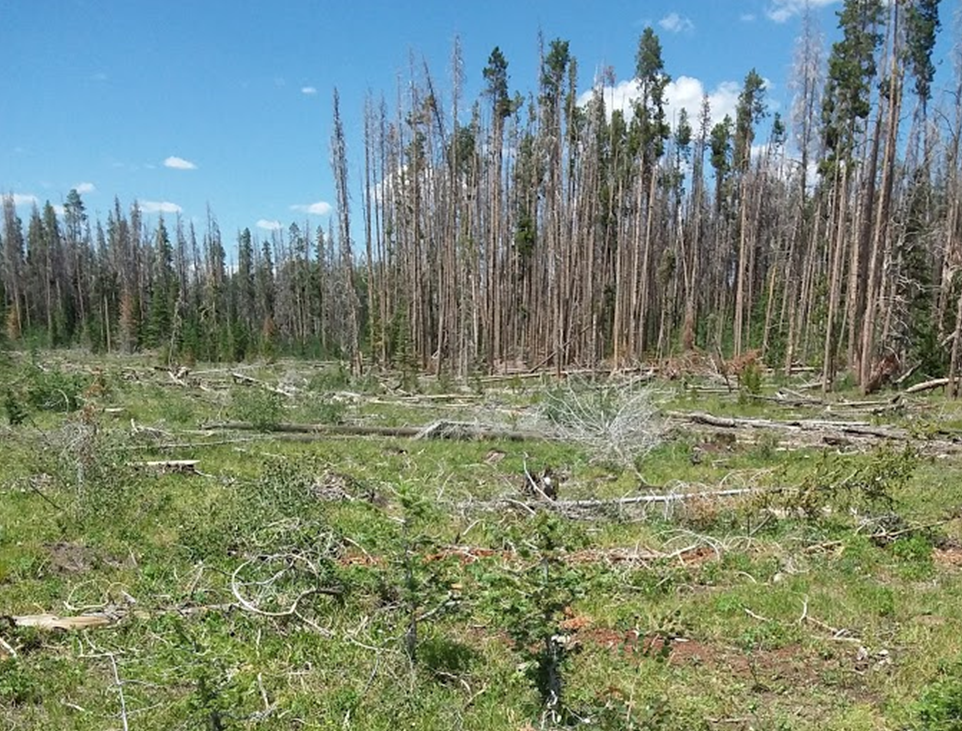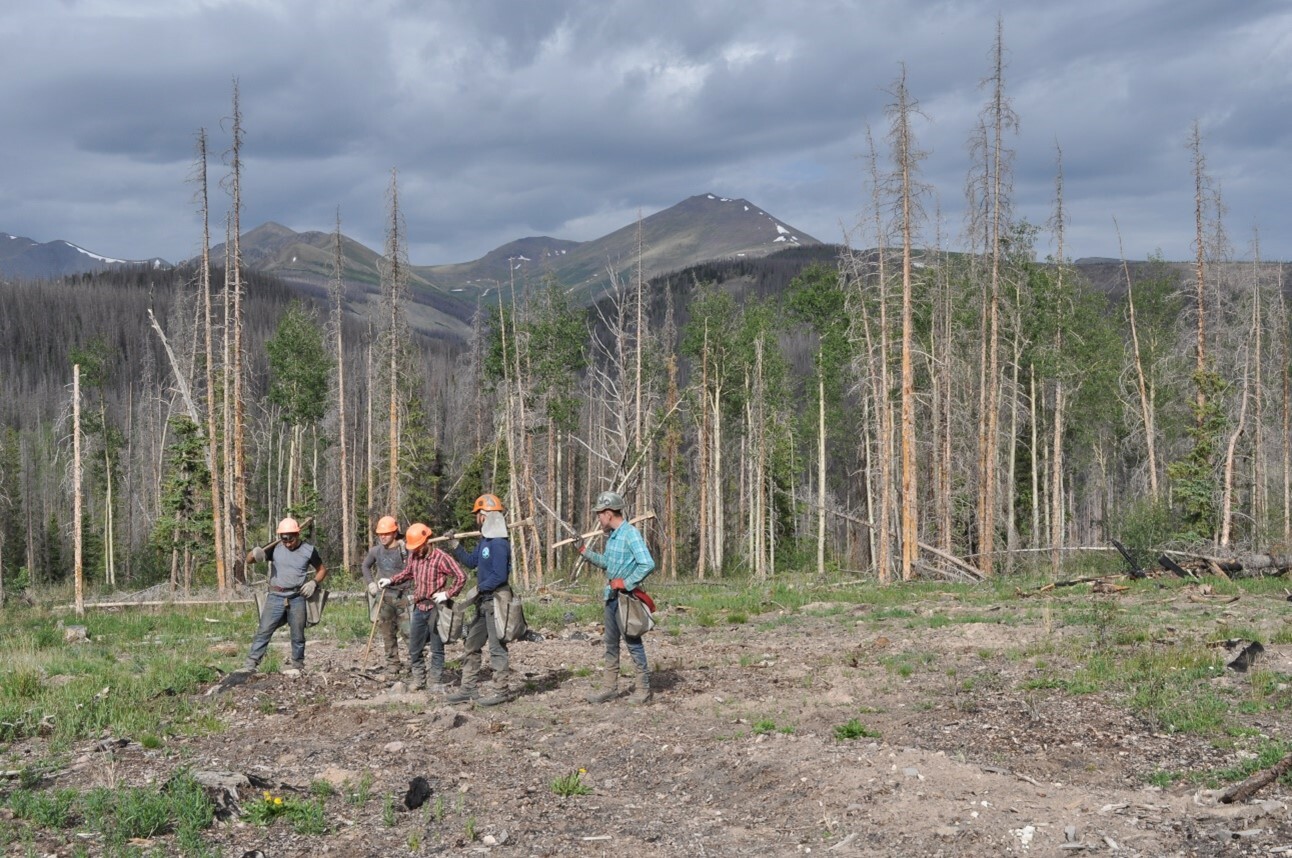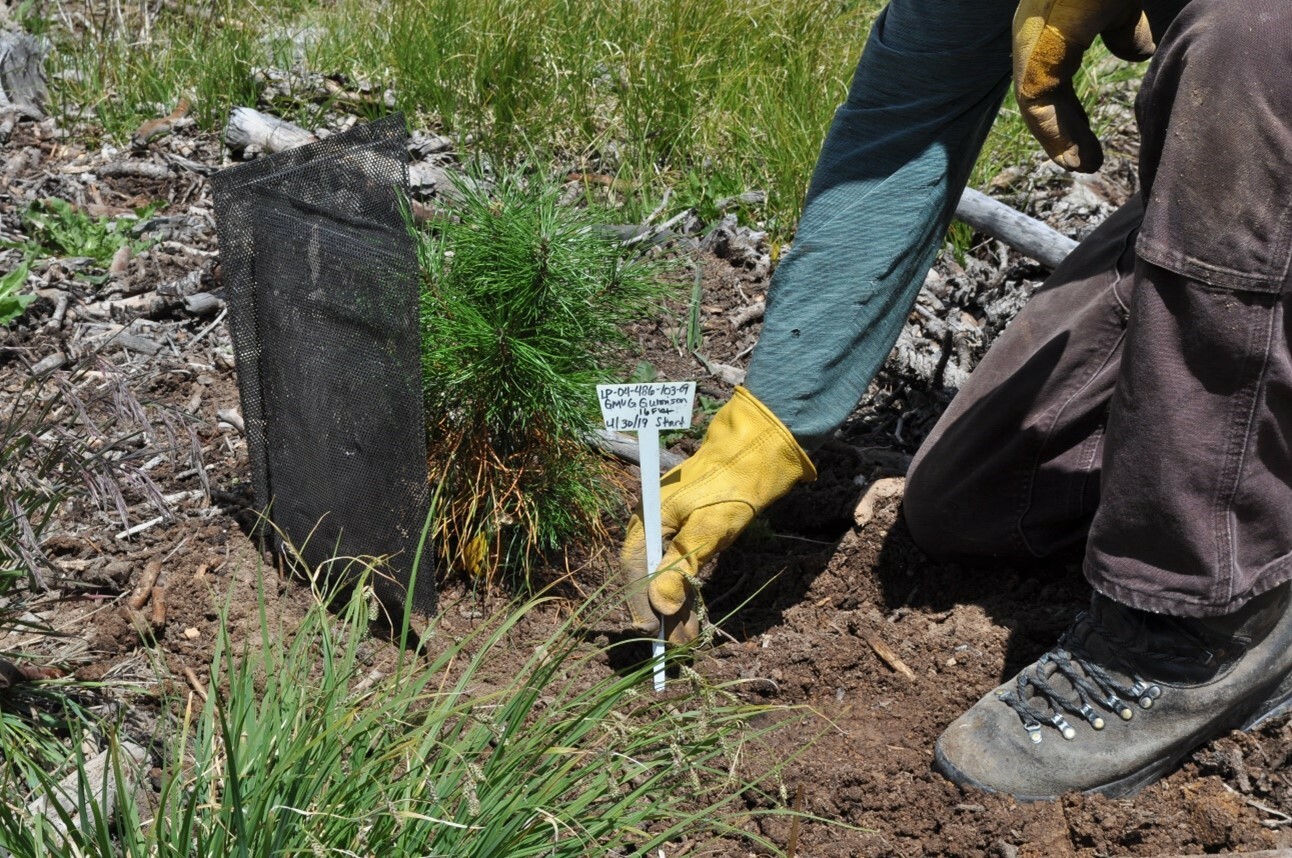Across the U.S., tiny, squeaking killers are ravaging National Forests at extraordinary scales, leaving behind dead and dying trees. They have altered millions of acres of forests and impacted wildlife habitat, watersheds, and regional economies. And they’re only about 6 millimeters long. What is this miniscule beast? Meet the bark beetle.
Photo by Kellon Spencer Photography.
Bark beetles are a natural component of conifer forests and important players in their ecosystems. In fact, most species are native to the U.S. The beetles attack live trees and, in turn, influence forest structure, species composition, productivity, and nutrient cycles – all of which, in moderation, can help keep forests healthy. However, there’s a downside. Enter climate change, which can turn the beetles on overdrive.
Warmer, drier conditions have increased bark beetle presence by expanding suitable habitat and driving population growth. Climate change also helps the beetles by increasing tree stressors, such as drought. Drought can alter tree chemical responses that inhibit insect-repelling tree resin (aka, sap), reducing a tree’s natural defense against infesting bark beetles.
Squeaking as they bore through host trees, the rice-sized beetles have caused widespread losses and economic impacts. In the West, several species of bark beetles have killed trees on more than 59 million acres (about the area of Colorado) over the past 20 years. In the South, southern pine beetles have inflicted millions of dollars’ worth of damage, and the beetles are spreading north to mid-Atlantic forests, where they have already caused significant disturbances.

Lodgepole pine stands affected by mountain pine beetle on Medicine Bow-Routt National Forest, Wyoming. The dead overstory allows light to reach the forest floor where other species can quickly outcompete lodgepole pine for natural regeneration.
After an outbreak, standing dead and dying trees remain, which may increase the risk of fire. Several studies exist on the interactions of bark beetles and wildfires, two disturbance types expected to increase. However, as with all things in science and the natural world, nothing is certain. Increased fire risk depends on several factors, including the severity of the outbreak, timing since the outbreak, overall tree moisture, tree cellular and chemical changes caused by infestation, and wind.
One thing that does seem certain: Tree planting can help!

Planting seedlings following a spruce beetle outbreak on Grand Mesa, Uncompahgre and Gunnison National Forests, Colorado.
Each year, the NFF plants trees on National Forests that have been severely affected by bark beetle outbreaks, places where there is zero to low chance of recovery without active replanting. Over the past decade, this has amounted to over a million trees planted for insect recovery. Projects include areas in the Northwest and Rocky Mountains affected by mountain pine beetles, Colorado’s Grand Mesa, Uncompahgre and Gunnison National Forests affected by spruce beetles, and Georgia’s Chattahoochee-Oconee National Forests affected by southern pine beetles.
Wilder-Highlands Pine Beetle Response Project on Grand Mesa, Uncompahgre and Gunnison National Forests, Colorado. Photo by Kellon Spencer Photography.
Before seedlings can be planted on most sites, the U.S. Forest Service must remove the dead and infected trees to halt the spread and reduce the potential for future outbreaks. The NFF helps with this important work as well, such as through the Wilder-Highlands Pine Beetle Response Project in Colorado and Bald Mountain Stewardship Project in Idaho. Both projects work collaboratively with the Forest Service and local partners to combat bark beetle infestations on the National Forests and adjacent private lands.
Bark beetle restoration through removal and replanting is critical to the future of these forests and can help speed up recovery. Tree planting helps reestablish cover and habitat for wildlife, restores watershed health and function, and rebuilds the visual and recreational quality for visitors, especially important in recreation-based regional economies.

Planting a lodgepole seedling on Grand Mesa, Uncompahgre and Gunnison National Forests, Colorado. Photo by the U.S. Forest Service.
Trees planted for bark beetle recovery support the NFF’s ongoing reforestation efforts. Learn more about our Tree Planting program and support reforestation projects like these on our campaign page.
Cover photo: Planting a whitebark pine seedling on Idaho Panhandle National Forests where the species has been decimated by white pine blister rust and mountain pine beetle. Photo by U.S. Forest Service.

